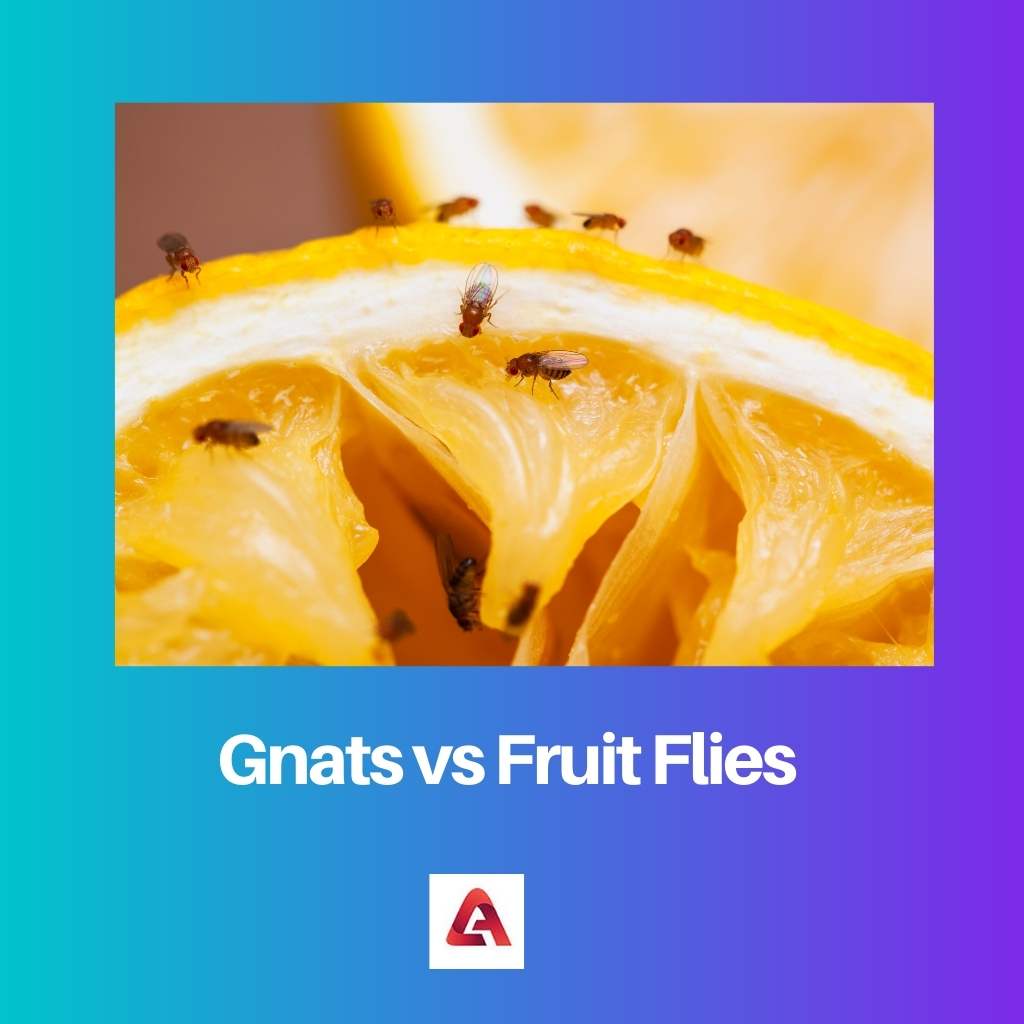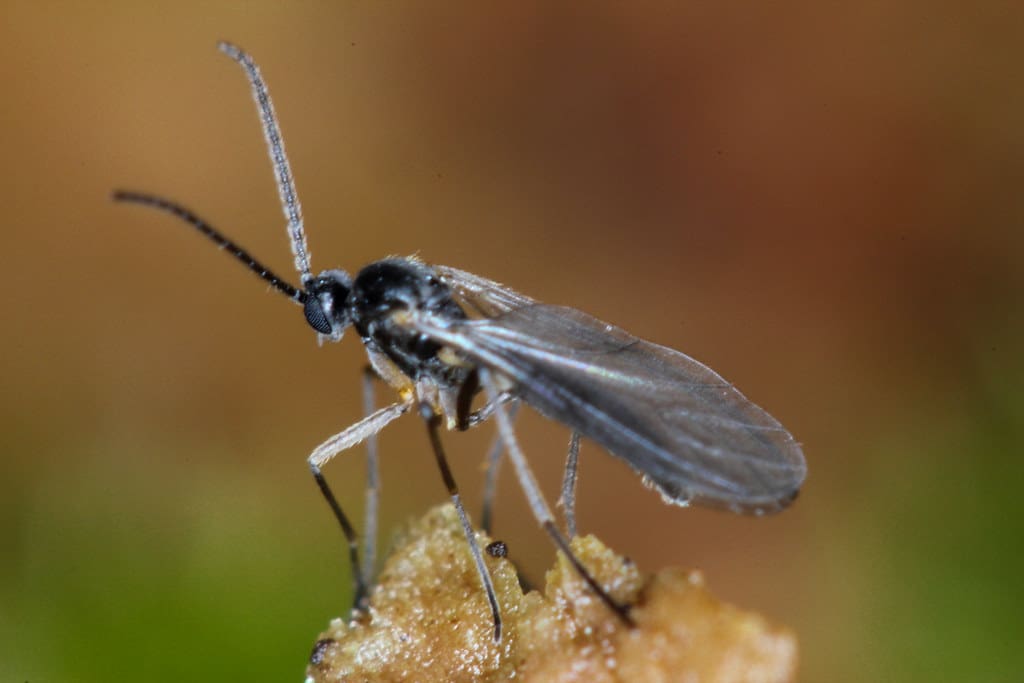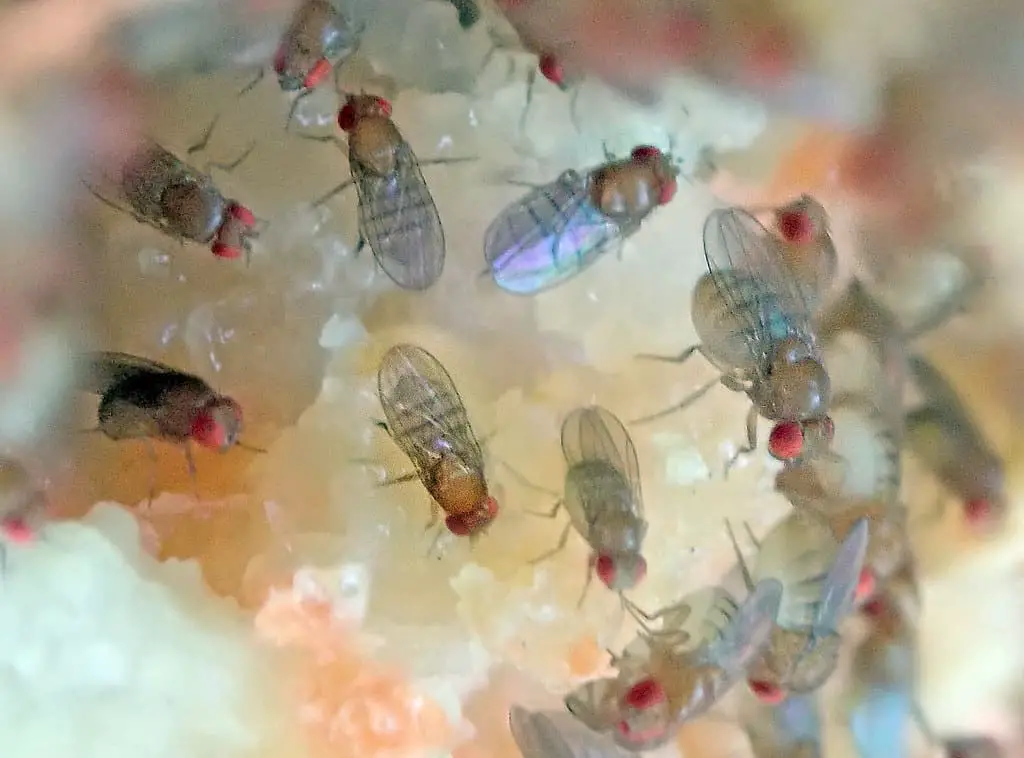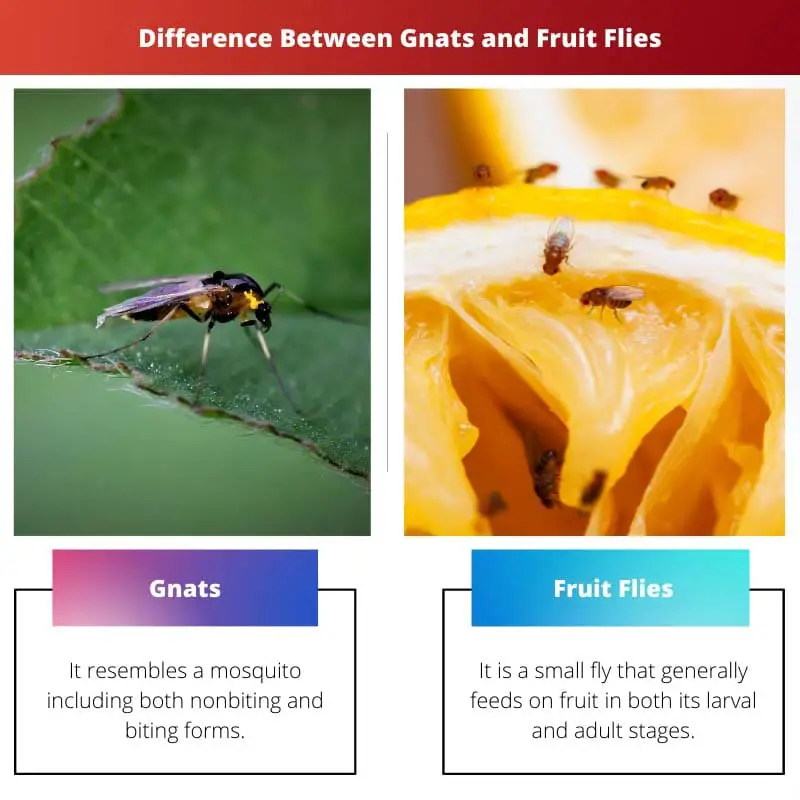When someone is constantly shooing away tiny flies, then most people might not look at them closely. Probably someone finds themselves dismissing them as either gnats or fruit flies. To the people, these both tiny pests irk a lot.
Both pests cause so many similar issues that homeowners can easily misidentify. Although these both flying pests look somewhat similar but are quite different. In this article, the main focus is on differentiating gnats and fruit flies.
Key Takeaways
- Gnats are small flying insects that include various species, while fruit flies are a specific type of small fly attracted to ripening and decaying fruit.
- Fruit flies have a faster reproduction cycle than gnats, leading to rapid infestations.
- Gnats can bite and cause skin irritation, whereas fruit flies are harmless to humans but can contaminate food.
Gnats vs Fruit Flies
Gnats belong to the family Mycetophilidae and are smaller than fruit flies, having slender bodies with long legs and antennae. Fruit flies belong to the family Drosophilidae and are larger than gnats, having rounder bodies and are more colorful than gnats, with red eyes and tan or brown bodies.

Gnats are any member of many small flies species that annoy and bite humans. Several non-biting insects like midges resemble mosquitoes and are sometimes described as gnats.
When it comes to North America, it is applied to the biting midge, black fly, fungus gnat, midge, and other small flies.
A fruit fly is an insect with two wings of either the family Drosophilidae or the Trypetidae. Insects of the family Drosophilidae are referred to as vinegar flies or small fruit flies, and those of the Trypetidae as large fruit flies.
The larvae feed on fruit or vegetative matter.
Comparison Table
| Parameters of Comparison | Gnats | Fruit Flies |
|---|---|---|
| Interpretation | It resembles a mosquito including both nonbiting and biting forms. | It is a small fly that feeds on fruit in both its larval and adult stages. |
| Lifecycle | About four weeks | 30 days but up to three months can survive |
| Color | Black or dark gray | Range from tan to black |
| Eyes | So small and hard to see | Big and red eyes |
| Shape | Long bodies and dangling eyes | Rounded silhouette |
What are Gnats?
A gnat is any of many tiny flying insect species in the dipterid suborder Nematocera mainly those in the families Sciaridae, Mycetophilidae, and Anisopodidae.
Cloud is the term that is used to define the flying of gnats in large numbers. They can be both non-biting as well as biting.
Gnat is a category of loose descriptive rather than other technical terms like phylogenetic, so there is no scientific consensus on gnat’s constituents.
Some of the entomologists consider gnats to be only non-biting flies. Particularly at dusk, in large mating ghosts or swarms assembled by male gnats.
Some of the gnat larvae are aquatic, and most are free living. Though some are carnivorous many feeds on plants. Larval plant feeders like Hessian larva cause leaf galls, root, or stem to be formed by the host plant.
Some gnats species are pests of potted plants, roots, and mushrooms in greenhouses and homes.
Biting midges and blackflies, also belonging to the category of a gnat, are small and sometimes barely visible and blood-sucking flies commonly described as biting gnats, punkies, no-see-ums, or sand flies in many areas.

What are Fruit Flies?
Drosophila melanogaster, or fruit fly, is a fly species in the family Drosophilidae. The species is referred to as the lesser fruit fly or fruit fly or, less commonly, the pomace fly or vinegar fly.
Biological research in microbial pathogenesis, genetics, life-history evolution, and physiology continues to be widely used.
The fruit fly is used in research owing to its life cycle, which is rapid, relatively simple genetics with chromosome pairs of only four and offspring per generation larger in number.
Originally, the fruit fly was an African species with all lineages of non-African having a common origin.
Fruit flies are common pests in restaurants, homes, and other places where food is given. Many species attack fruits that are cultivated, which causes damage and might lead to significant losses related to the economy.
Eurosta species causes a common stem swelling or gall of goldenrod. In citrus fruit, as many as 500 eggs can be laid by a Mediterranean fruit fly. Into the fruit flesh, the larvae tunnel and, in return, make it unfit for consumption by humans.

Main Differences Between Gnats and Fruit Flies
- When it comes to physical appearance, gnats measure approximately in length as ¼ to 3/4-inch with disproportionately large wings. They also have gangly, large legs that give them the ability to fly and jump quickly. Conversely, fruit flies wings have distinct black color patterns and abdomen and dark tails.
- Gnats eat organic matter in the indoor potted plants or soil of the garden. On the flip side, fruit flies feed on overripe fruits as well as rotting food in trash cans.
- Gnats Larvae in the plant soil due to excess moisture. On the other hand, the eggs of female fruit flies are planted on the organic material, which is decaying.
- In the suborder Nematocera, gnats are found and they are in the families Anisopodidae, Sciaridae, and Mycetophilidae. In contrast, fruit flies fall under two families: Drosophila and Tephritidae.
- Gnats are mostly found in damp and moist places like swamps, forests, and meadows. Meanwhile, all over the world, fruit flies can be found, but because they are ripping, fruits fascinated are commonly found in restaurants and kitchens.


Very informative article, I didn’t know so much about flies.
Absolutely, the details about their physical appearance are quite fascinating.
I agree, it’s interesting to learn about these small pests.
Fascinating read, I appreciate the level of detail provided here.
I never thought I’d be so interested in the differences between these tiny pests.
It’s certainly a fascinating topic to explore, especially given the impact they can have.
This information will definitely be useful to many. I’m glad I read it.
I’ve always been curious about the differences between gnats and fruit flies. This post was very helpful.
Yes, it’s a great resource for anyone wanting to learn more about them.
Definitely, I’m impressed with the depth of information in this article.
I never realized there was so much to know about these small insects.